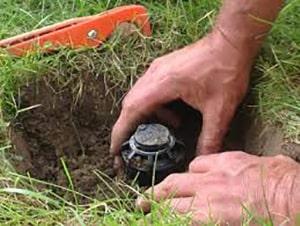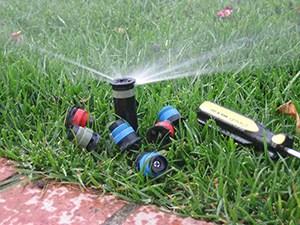Dallas Sprinkler Repair and Installation
 It’s bound to happen eventually. You’re going to have a breakdown in your sprinkler system where you’re going to need professional advice. A Dallas Sprinkler Repair professional can assist and replace your sprinkler system. There are sprinkler repair experts in Dallas, but maybe you’re more of a DIY type where you like to research issues and make them yourself. After all, if you’re able to correctly understand the issues and make quality repairs yourself, why not?
It’s bound to happen eventually. You’re going to have a breakdown in your sprinkler system where you’re going to need professional advice. A Dallas Sprinkler Repair professional can assist and replace your sprinkler system. There are sprinkler repair experts in Dallas, but maybe you’re more of a DIY type where you like to research issues and make them yourself. After all, if you’re able to correctly understand the issues and make quality repairs yourself, why not?
The truth is, no matter how much you study any technical trade, the best teacher is an actual hands-on experience. Basic irrigation maintenance, it is never suggested to give your system a full overhaul alone.
However, one key item to understand anything that’s technique is to understand how to install. Many technical traders begin their techs with installation work, then with experience comes service calls. When you understand everything that goes into a system, it’s easier to be able to break apart individual parts. Professional service and repair the correct way, knowing how it went in and what went into it.
Irrigation System Installation
 We’ll give you several tips on how to successfully install an irrigation system. It is still recommended to hire a professional for this type of work as one mistake could become very costly in the long run. Doing it yourself or incorrectly might cost more than an actual professional installation. When properly installed initially, your system could be running smoothly for several years to come. Whereas, a poor install with faulty poor connections could break down as soon as the next month of consistent use.
We’ll give you several tips on how to successfully install an irrigation system. It is still recommended to hire a professional for this type of work as one mistake could become very costly in the long run. Doing it yourself or incorrectly might cost more than an actual professional installation. When properly installed initially, your system could be running smoothly for several years to come. Whereas, a poor install with faulty poor connections could break down as soon as the next month of consistent use.
Installation goes as follows:
- Planning – This is the first step to nearly any project. No plan is perfect, but you need a good plan to follow in order to make sure you’re using the least amount of water in the most efficient way possible. The good news is that there is a ton of reliable professional reading on the subject from the product manufacturers of irrigation systems. As a matter of fact, one company will actually do the layout design for you (Rain Bird) as long as you send them property measurements. So as far as this step goes, it might take a lot of research. Get this correct and the rest will likely fall in line with a little intellect and knowhow.
- Sod Removal – You’ll want to set the sod where it won’t get damaged and also have a place for the dirt that isn’t all on the sod when you dig it up. If you do this correctly, it should barely be noticeable where you removed and did your digging.
- Use a Vibratory Plow To Pull Pipe – Using a hand plow that uses a blade to essentially sow the line into the ground is cleaner and faster than using a giant blade on a trencher. Sometimes, it might be necessary to use it. But, if you can avoid it with this solution, you’ll greatly appreciate it. Consider burying about 10” or so but be very careful to avoid underground utilities and existing lines. Consider getting locates by calling 811, because if you cut the wrong line (namely fiber) you’re looking at $1000s of dollars in fees. It’s VERY doubtful you’ll hit that in your yard at 10” but just remember that there’s a lot in the ground depending on your location. You also don’t want to hit the gas, sewage, or anything really. It’s suggested to hand-dig around utilities, even when marked.
- Bore Rods For Obstructions – You’ll likely need this to get under the driveway or a sidewalk. Some plows have this attachment, so if you need to go under anything like that, make sure you’re getting this at the time of the rental as well.
- Keep Clean Pipes – We aren’t talking about the outside. Use Duct tape on open ends to keep clogs from occurring. However, if you’ve already got dirt and debris in the lines, make sure you flush the system before installing the head.
- Use Pipe Cutters, Not Saws – A saw will create shavings that could break off into and clog sprinkler heads. Pipe cutters are generally inexpensive and will create a clean cut.
- Double-Clamp All of Your Main Lines – This will offer extra protection against leaks. Sometimes you can get an oval shape with crimp clamps, so this helps in areas that have this and are consistently pressurized. You can also stagger the ears of the two clamps in order to offset pipe distortions.
- Install Heads With Swing/Funny Pipe – This is a flexible pipe that would be installed between the poly pipe and the sprinkler head. This makes it easier to position the head more exact. It can also allow a little extra movement in cases where it gets run over. Rigid connections will be more susceptible to cracks.
- No Kinks – These become weak points in your pipe. Even if you straighten out the kink, it isn’t going to be as strong as it was prior to the kink. You’ll need to cut the section and splice the two ends together with a coupler.
- Use Self-Tapping Fittings – When you use a hand plow to pull pipe, it can be very difficult to install traditional tee fittings. You’re going to want to use self-tapping fittings to tap heads right into continuous runs of pipe. Snap it onto the pipe, and tap into the pipe with a spike that screws in. Hook up your funny pipe to the fitting and you’re all set.
- Use Smart Controllers – This can help save hundreds of gallons of water each day. There are controllers and sensors that take many things into consideration, including temperatures, sunlight, rainfall, etc. This will determine when and for how long your irrigation system needs to work. Some even connect to the internet, allowing remote access and updates straight from your mobile device.
- Protect Wiring – Correct enclosures go a long way to prevent unnecessary oxidation due to the elements.
Make sure you’re seeking the advice of a professional sprinkler system repair service in Dallas.